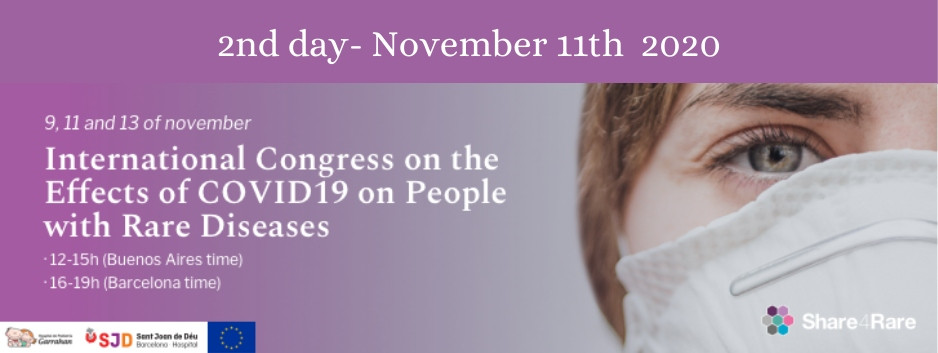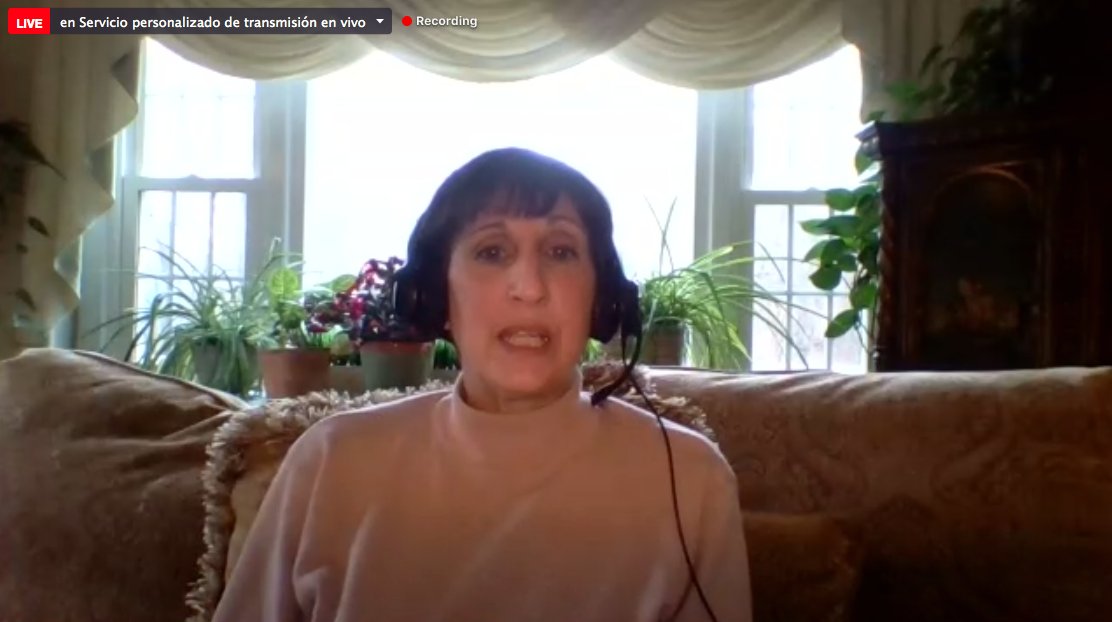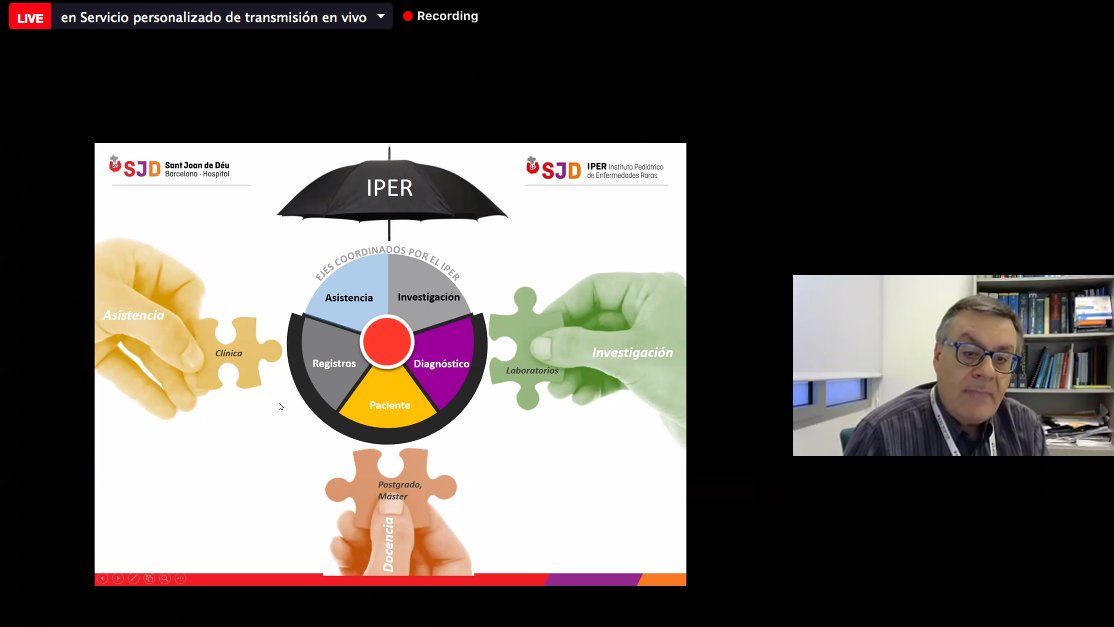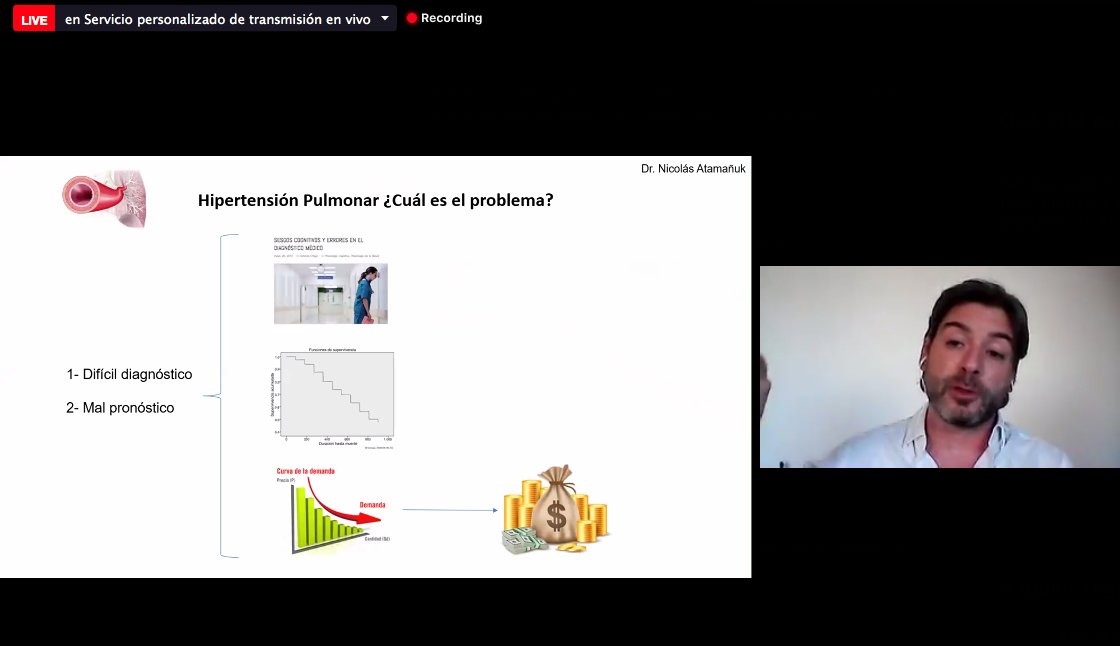
Report - 2nd day of the International Congress on the Effects of COVID-19 in People with Rare Diseases

Emotional support to the affected people: the role of patient organizations and virtual communities
Roberta Anido de Pena (president of FADEPOF) opened the session with a panel that discussed the role of patient organizations during the COVID-19 crisis. Jill Pollander, director of Patient Services at the National Organization for Rare Disorders (NORD) and Clara Hervás, Rare Disease & Policy Coordinator of NGO Committee for Rare Diseases, participated in the table.
The speakers stated that the greatest concern for the families of people with rare diseases during the pandemic is economic, since they cannot have a regular job because they have to play the role of caregivers. In addition, affected people are afraid to go to the hospital due to potential infections. Hervás pointed out the relevance of connecting patients with adequate information sources and patients’ organizations to create a sense of community.
Pollander spoke about how teleconferences and teleconsultations have increased since the start of the pandemic and how this improves the access to health services, since geographical distance is no longer a limitation. Even so, it is important to keep some of the attention in a face-to-face format, as Clara Hervás pointed out, since there are many people who are not familiar with technology or do not have access to it.

Paradigm shift: care model centered on the patient and its environment from primary care to high complexity
The second session, moderated by Virgina Fano, pediatrician and coordinator of the Interdisciplinary Group of Skeletal Dysplasias at Hospital Garrahan, was focused on the new models of care in rare diseases.
The session began with the intervention of Dr. Mariana Nastri, also a pediatrician at Hospital Garrahan. Dr. Nastri explained how hospital conditions had changed with the pandemic. As a result of the WHO declaration and the increase in COVID-19 cases, the centre was forced to develop a set of measures to guarantee the protection, biosecurity and optimization of the spaces.
Dr. Juan Llerena, geneticist and coordinator of the Centro de Genética Médica and Centro de Referência para Doenças Raras e Osteogênese Imperfeita (Brazil) spoke on the second place. Dr. Llerena reviewed the role of telemedicine during the pandemic and emphasized the role of genetic medicine, very important during pediatric age but also on all the stages of life.
Subsequently, Dr. Francesc Palau, director of the Pediatric Institute for Rare Diseases (IPER) and the Sant Joan de Déu Research Institute (IRSJD), spoke about the role of IPER. This multidisciplinary centre aims at combining medical care with laboratory research, teaching and attention for patients and families. As Palau pointed out, IPER is a good example of the implementation of multidisciplinary patient management.
David Peña, president of the Mexican Federation of Rare Diseases (FEMEXER), concluded the session by explaining how the Federation is managing the needs of the patients during the pandemic. He pointed out that, if there is another pandemic to come, we will have more information so we will be able to act more quickly and effectively.

Social problems of people affected by rare diseases and COVID-19 in Argentina
Melody Escudero Amada, patient with Charcot-Marie-Tooth disease, explained her experience during the pandemic as a patient with a rare disease and COVID-19. She lives with her mother, who suffers from the same disease.
María José Nacci, dean of the Faculty of Social and Human Sciences-UK, spoke about how the COVID-19 crisis is revealing the inequality in family care, where often all the tasks rely on women. This increases the workload of home and professional work. Differences will only be reduced if limitations are recognized.
Dr. Nicolás Atamañuk, head of the Pulmonary Hypertension Multidisciplinary Group at the Hospital Juan A. Fernández in Buenos Aires, emphasized the differences between prevalent diseases and rare diseases. His work focuses on pulmonary hypertension, a disease that usually presents a delay in diagnosis and a poor prognosis. Furthermore, it is not very prevalent and this implies that very few patients will use a big part of the public health budget.
Then it was the turn of Dra. María José Martínez Cáceres, head of the Complex Chronic Conditions Clinic at Garrahan Hospital, who spoke about chronic diseases. She stated that these patients require 20 times more health budget than a healthy person does. These conditions are defined by chronicity and strong demands. Chronic patients require great support and have functional limitations. Families suffer from several problems: unemployment, financial difficulties and a large investment of time on care.
Nicolás Kreplak, Vice-Minister of Health of the province of Buenos Aires, was the last to speak and introduced the topic of collaboration between hospitals. He considers it vitally important to build a strategy that unifies the territories and allows the use of intensive therapies in hospitals on a continuous basis.

The recording of the session is now available on the Share4Rare YouTube channel.
